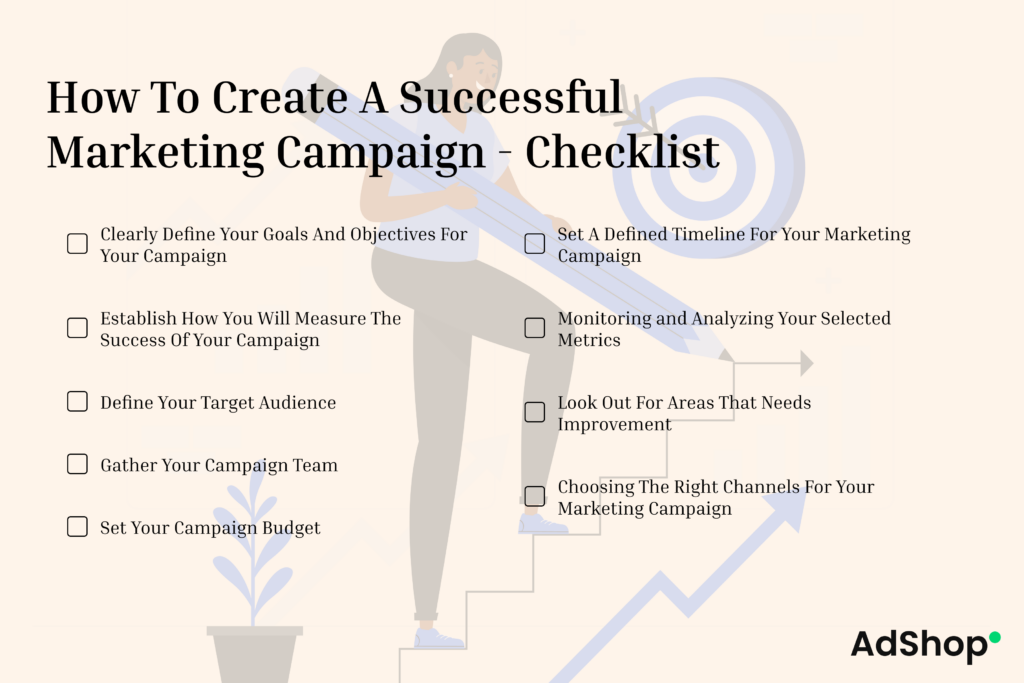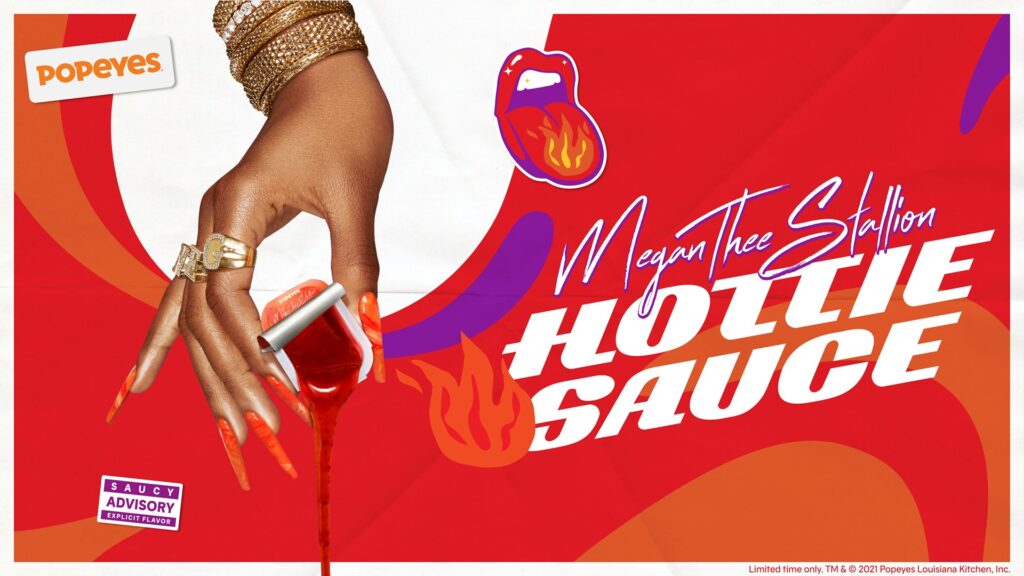
The Ultimate Guide To Marketing Campaigns (With Examples!)
Learn how to plan, execute and analyze a successful marketing campaign.
 by
Okpaka Peace
by
Okpaka Peace

Marketing is a dynamic process. Constantly adapting to the ever-changing needs and preferences of consumers.
In fact, according to a recent report by eMarketer, the global digital ad spending is projected to reach a staggering $626.86 billion this year and $835.82 billion in 2026.
These numbers speak volumes about the crucial role marketing plays in businesses.
From iconic campaigns like P&G’s “Thank You, Mom” to the viral sensation of Dos Equis’s “Most Interesting Man in the World,” we have seen the power of marketing.
The real question is, why do certain campaigns stick with us while others fade into obscurity?
It’s because well-executed marketing campaigns possess the ability to make companies memorable. They go beyond selling products and services.
Good marketing creates a connection, forge an identity, and shape perceptions.
But what makes a marketing campaign truly successful?
That’s where this ultimate guide comes in.
AdShop has curated a comprehensive resource that delves into the intricacies of running impactful, measurable marketing campaigns.
From understanding the different types of campaigns to crafting compelling messages. All and more in this guide.
Let’s get right to it.
Marketing campaigns are organized and strategic activities that promote a specific business goal. This includes creating awareness for a new product or service, attracting and engaging customers, collecting customer feedback or driving conversions.
Campaign efforts may involve a combination of media – print advertising, email, in-person events, social media, television or radio advertising, podcasts and pay-per-click.
Marketing campaigns typically involve multiple channels and tactics. They can run over a defined period of time or be ongoing.
Marketing campaigns and advertising campaigns are related but distinct concepts. While they both aim to promote a product, they differ in their objective and execution.
Marketing is the process by which a company promotes its brand and encourages customers to make purchases. Alternatively, advertising are the techniques used to call the attention of the public to a product. Thus, creating persuasive messages around the brand goals.
One can say that an advertising campaign is a subset of a larger umbrella – the marketing campaign.
Learn More: Advertising Vs. Marketing
Various marketing campaigns each come with specific objectives and strategies. Here are some common types of marketing campaigns;
Understanding the different types of marketing campaigns can help businesses connect with target audiences and drive desired outcomes.
According to a survey, 86% of B2C marketers use content marketing campaigns to engage and nurture their audience. In comparison, 91% of B2B marketers say they use content marketing in their overall strategy.
Lead generation campaigns capture potential customer information and drive conversions. Research shows that companies with well-defined strategies can experience higher growth rates.
Social media campaigns have gained immense popularity, with 90% of marketers agreeing that social media marketing has increased their brand exposure. Additionally, 75% of marketers attribute increased web traffic as a result of social media.
On the other hand, 63% of consumers trust influencers’ opinions about products more than traditional advertising.
Multiple components go into the planning, executions and results of a successful marketing campaign. Here, we will discuss key elements that are incorporated;
Before embarking on a marketing campaign, you must clearly define who your target audiences are. Ensure that your campaign efforts are aimed at the right group.
Define your target audience by answering these questions. This will mark the first step in planning your market campaign.
What do you aim to achieve at the end of your campaign?
Develop specific and measurable goals. Basically SMART goals.
Check out this free resource “Free SMART Goal-Setting Template” from HubSpot
After setting your campaign goals, determine what metrics you will use to evaluate your campaign’s success.
You might wish to measure your campaign’s engagement. Such as click-through rates, time spent on site, social media engagement, or email open rates.
They indicate the level of audience engagement and interest generated by the campaign. These metrics can be measured using Google Analytics.
The main KPIs used in marketing campaigns are:
What funds are allocated for each campaign activity?
These include advertising, promotions, content creation, media buying, and other campaign-related expenses.
The budget plays a crucial role in determining the scope and scale of a marketing campaign. It influences the overall strategy, messaging, and tactics used to achieve the campaign objectives.
You have established your target audience, goals and allocated budget. It is time to begin creating your campaign.
What content will you be creating to fuel your marketing campaign?
It is common for a marketing campaign to include multiple content formats.
A branding campaign may include content in multiple formats. Videos, print, social media posts, press releases and even blog posts.
Study content created by competitors to get a better understanding of your audience – but, never copy a competitor’s work.
Where will your content and messages be shared? How will it get to your target audience?
Each channel has its own characteristics.
Selecting the right channels is crucial for maximizing campaign exposure, engaging the audience, and achieving desired objectives.
These individuals collaborate and work together to plan, execute, and manage the various aspects of the campaign.
The team consists of professionals with different roles and expertise. Marketing strategists, creative designers, copywriters, data analysts, project managers, and digital marketers.
Before starting a campaign, you will choose team members who will contribute their skills to ensure the campaign’s success.
Planning your first marketing campaign is no easy task. You might be wondering “How do I start?”
A quick internet search can’t specifically tell you everything you possibly need to know. There is no set rule or fixed steps to creating a campaign. Each campaign choice is specific to the objective and end goal of the business.
Planning one is not easy, but also not impossible. That’s why we have compiled this guide to help you.
You will require a defined course of action. Understanding the campaign planning process will help you outline a clearer view of your strategies and tactics.
Let’s talk about this process in detail
The planning phase of any campaign is crucial. It guides your team on what to do, how to measure the campaign’s success and what to do when things go south.
Check out these free marketing plan templates by HubSpot and Mayple.
Start simple.
What do you aim to achieve at the end of the campaign? Why are you running this campaign?
Setting SMART objectives will provide a clear direction for your campaign.
If you are having difficulty defining a specific objective(s), it’s okay to start broad. Take a look at the goals listed below and see which resonates better with yours.
Although it is hardly a thoroughly exhaustive list, it provides a general idea on types of business goals to achieve.
Remember, setting SMART goals help the team work towards a specific target, track progress and evaluate the overall success of the campaign.
A SMART goal might look like this:
“The goal of our marketing campaign is to increase online sales by 20% in the next quarter by driving targeted traffic to our e-commerce website through search engine optimization (SEO) and pay-per-click (PPC) advertising campaigns.”
The goal is
To simplify the process, you can make use of a SMART Goal Setting Template. Like the one shared by HubSpot.
This would differ for every marketing campaign depending on the channel used and the end goal. You may wish to measure website traffic, conversion rates, engagement levels, or social media reach.
Here are a few examples on metrics you can monitor based on campaign goals.
For our SMART goal “The goal of our marketing campaign is to increase online sales by 20% in the next quarter by driving targeted traffic to our e-commerce website through search engine optimization (SEO) and pay-per-click (PPC) advertising campaigns.”
The metrics that would be measured may look like;
You can have awesome plans, goals and the right campaign team. However, if you have targeted the wrong audience, your campaign is on the hill of failure.
By understanding who your ideal customers are, you can tailor your messages.
Also, you will choose the right marketing channels and create real content that resonates with them.
When choosing your target audience, consider these few points;
Now it’s time to gather your campaign team. The group of talented individuals who will bring your marketing efforts to life.
Building a strong team is essential for a successful campaign. Here is how to do it;
A Pro tip – start with your inhouse team before sourcing for external help.
This is because these people have been in close proximity with you. They know and understand your brand. They are aware of what is needed to make your marketing campaign a success.
Your campaign budget plays a crucial role in determining the overall success of your marketing efforts.
Planning your budget carefully ensures that you allocate resources effectively and maximize the impact of your campaign.
Your budget goes hand-in-hand with your campaign’s end goals. The more involved your goals are, the higher your budget will become.
Set a realistic budget. One that aligns with your campaign’s objectives. It should be based on your available resources and research.
There are a few different ways to allocate a budget for the campaign. Your budget could be;
It’s better to have a well-planned budget that you can work with rather than overextending yourself financially.
You have successfully gone past the planning phase. Now, it is time to pass your campaign’s message to the public. This is the time for execution!
The How, When and Where?
Here you would employ the use of numerous platforms, set strategic timelines for disseminating your content. This is to maximize the reach and engagement of your campaign efforts.
When it comes to selecting the right channels for your marketing campaign, you’ve to understand where your target audience is.
Where they spend their time and which platforms resonate with them the most.
Whether it’s leveraging social media platforms or exploring traditional channels such as print or television. The key is to meet your audience where they are and deliver your message at the right time. In a way that captures their attention and sparks engagement.
A simpler way is to categorize these distribution channels using the PESO Model.
The PESO Model divides each distribution channel into 4 main categories: Paid, Earned, Shared and Owned.
A timeline for a campaign enables the team to stay organized and ensure timely execution.
By establishing a clear roadmap, the team can stay on track, maximize efficiency, and deliver the marketing message to your audience at the right time. Thus, ensuring a smooth and successful marketing campaign journey.
Let’s say you don’t have the time to distribute your campaign materials at specific times and on different platforms. That’s fine.
Social media tools (like Hootsuite) and email marketing tools can alleviate the pressure of daily posting. Check out other tools like Buffer and Hubspot.
Here, you analyze the results of your marketing campaign.
Most of the campaign’s overall analyzing and tracking will be done at the end of the campaign. However, you can still monitor and analyze these metrics as the campaign runs.
In this phase, you can make good use of analyzing tools and platforms to help gather as much useful data as possible.
Many media platforms have built-in metrics and it is beneficial to leverage them. These metrics provide valuable insights into the success of specific elements. Metrics such as – email’s click-through rate, social media engagement, or website analytics.
Ultimately, they serve as valuable tools for analyzing performance. Also in identifying areas of improvement, and refining your strategies for better results.
No marketing campaign is 100% foolproof. It can not be perfect. That is why you must look at what went wrong and how to resolve them. This would help strengthen the results of your next campaign.
Call a retrospective meeting with your team. Ask for their feedback concerning the campaign. Ask questions like;
Proactively identify areas for improvement. This way, you can refine your approach and make necessary adjustments. Thus, optimizing your campaign for better results.

Let’s take a quick lesson from those that did it and succeeded effortlessly. Here are some great marketing examples to learn from.
Take one or 2 (maybe more) lessons from their actions.
In the last quarter of 2021, Mark Zuckerberg, CEO of Facebook announced its rebranding. With a new brand name and aggressive marketing campaign, the world was introduced to the new concept of the Metaverse.

The aim was to build a virtual world where people can interact, connect and explore. They also dropped a video explaining what the metaverse is about. Check out their Instagram page, Meta, for their latest updates “It’s Your World”.
This highly successful and well-known marketing campaign by Apple highlighted the camera capabilities of iPhones.

The campaign featured photographs and videos captured by everyday iPhone users, showcasing the power of the device’s camera and encouraging creativity.
The strength of this campaign was in its user-generated content approach.
By featuring real people, Apple humanized the brand and tapped into the storytelling aspect of photography. The campaign was highly relatable, and demonstrated that anyone could capture amazing moments with an iPhone. Regardless of their photography experience.

On Oct.19 2021, Megan Thee Stallion Hottie Sauce dropped at Popeyes.
Both were at the prime of their career. Popeye served one of the best chicken sandwiches in the fast-food market. And Megan, she was becoming the hottest new rapper in the music industry.
It was certainly no surprise when these two joined forces and created a stunningly delicious campaign.
Focusing on younger groups as their target audience, Popeye tapped in and capitalized in this new market and has an explosive success.
This campaign aimed to redefine the way people travel and experience the world.
The ability to tap into the emotional aspect of travel was the selling point of this campaign. It showcased diverse travel experiences and highlighted the unique stories and connections that guests could create through Airbnb.

The campaign resonated with travelers who sought more than just a place to stay. It appealed to their desire for immersive and authentic travel experiences. Additionally, it showcased real travelers and their stories. Thus, creating a more humanly feeling to the brand.
The hashtag #BelongAnywhere became synonymous with the brand and was embraced by travelers worldwide.
Marketing campaigns are an integral and crucial aspect of any business. It is important if you wish to grow a successful and thriving brand.
Planning and executing a marketing campaign is no easy process.
However, it is not impossible.
With the right material and guidance, you are on your way to achieving your most successful campaign yet.

Learn how to plan, execute and analyze a successful marketing campaign.

Understand the key differences between advertising and marketing.